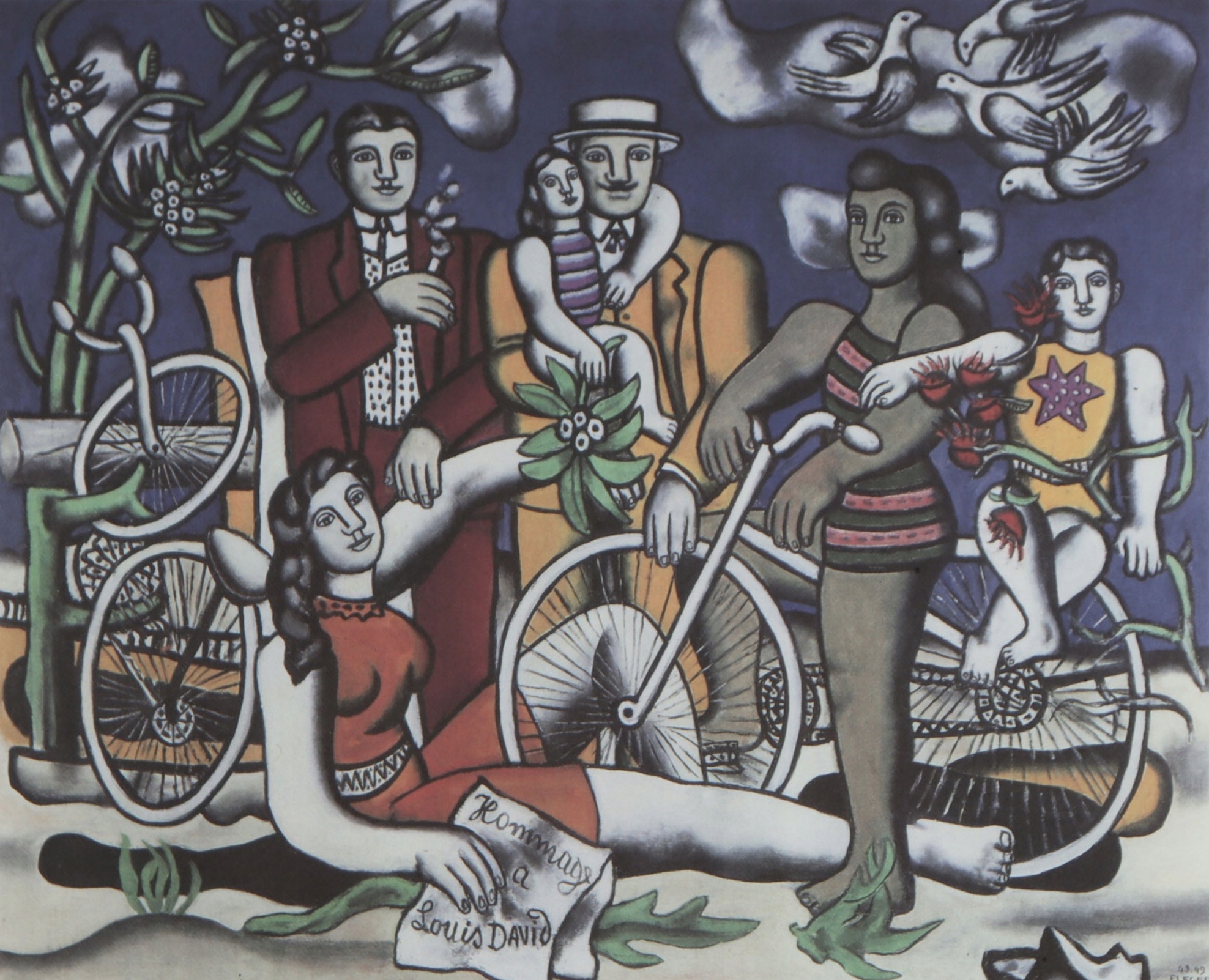
Fernand Léger’s Tribute to Louise David
Introduction
Fernand Léger was a prominent French painter who played a significant role in the development of Cubism. In 1923, he created a painting titled “Tribute to Louise David,” which has become one of his most famous works. The painting is a tribute to his friend and fellow artist Louise David, who had recently passed away. In this blog post, we will explore the significance of this painting and how it reflects Léger’s artistic style.
Bold Colors and Geometric Shapes
The painting “Tribute to Louise David” is a prime example of Léger’s artistic style, which was characterized by bold colors and geometric shapes. In the painting, Léger used flat, bright colors to create an abstract composition that features a series of overlapping shapes. The shapes are arranged in a way that creates a sense of movement and dynamism, which is a hallmark of Léger’s work. The painting is also notable for its use of contrasting colors, which creates a sense of tension and drama within the composition.
A Tribute to a Friend
As the title suggests, “Tribute to Louise David” is a tribute to Léger’s friend and fellow artist, Louise David. David was a talented painter in her own right, and she and Léger had a close personal and professional relationship. The painting is a celebration of David’s life and work, and it reflects Léger’s deep admiration for her. The bold, dynamic composition of the painting is a fitting tribute to David’s own artistic style, which was characterized by a similar use of bold colors and geometric shapes.
Conclusion
Fernand Léger’s “Tribute to Louise David” is a masterpiece of modern art that reflects his unique artistic style and pays homage to his friend and fellow artist. The painting’s bold colors and geometric shapes create a dynamic and visually striking composition that is both powerful and poignant. Léger’s use of contrasting colors and overlapping shapes creates a sense of tension and movement that draws the viewer into the painting. Overall, “Tribute to Louise David” is a testament to Léger’s talent as an artist and his deep respect for his friend and colleague.
Fernand Léger
Fernand Léger (1881 Argentan – 1955 Gif-sur-Yvette) was a dominant artistic figure of the 20th century. In response to cubism, he painted almost monochromatic compositions consisting of geometric, cylindrical, simplified forms that were easily readable in their own realism. He constructed expressive compositions from them, initially associated with the cult of technological civilization, machinery and industry, and then more generally with the everyday life of ordinary people. Characteristic of his works is the interplay of a strong, fluid contour line tightly enclosing the depicted forms, with spots of pure color. Around 1924, the artist became interested in architecture and mural painting: he created decorative compositions, often of monumental proportions. He collaborated with purism creators: Pierre Jeanneret and architect Le Corbusier. He designed theater decorations, fabrics, stained glass, and mosaics, practiced sculpture, graphic design, film, and ceramics. He was a talented teacher, theorist, and popularizer of art.



